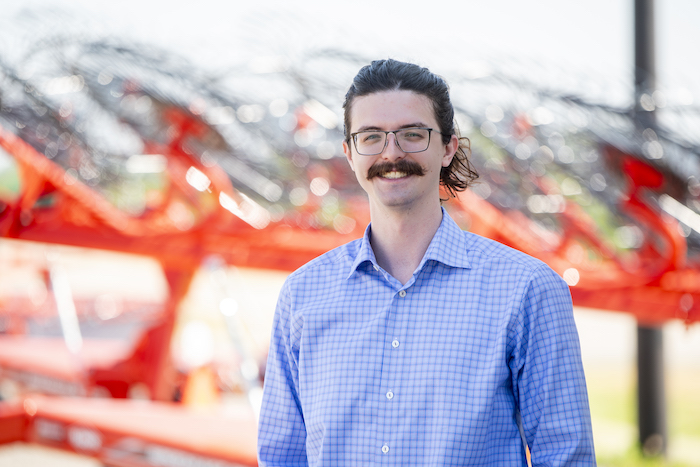Fast Facts
Customer Segment: Corn and soybean farmers
Geography: Will work in all regions, but speed benefits will seen [or better word] in areas like the Dakotas an central Illinois.
Key Selling Point: High-speed application allows growers to get more seed in the ground in less time, correctly with good seed spacing and consistent depth.
The Kinze 4905 True Speed Planter is the next generation of Kinze’s 4900 model. Its True Speed system consists of a high-speed electric meter and seed delivery tube enabling corn and soybean farmers to plant at speeds up to 12 mph. Brad Niensteadt, senior product specialist at Kinze, emphasizes the increased wear life components present in the 05 series enhancements compared to the previous generation 4900 models.
“It boils down to longer wear life components in the row unit, parallel arms, seed tube guard, as well as double bearing disc opener blades,” he says. “What I tell growers is, ‘However many row acres you’re getting out of your current units before you have to start replacing components, now you can double that.’ Everybody thinks high-speed parts wear quickly, but we built this to resist as much as possible to keep money in people’s pockets.”
Niensteadt sees the planter’s high-speed application as its feature selling point. “The best thing is the ability to cover more acres,” he says. “The goal is to get as much in the ground in as short a time as possible, but more importantly, to do it correctly, with good seed spacing and consistent depth.”
He doesn’t limit the 4905’s operability to any specific U.S. region, but he points out that travel speed might vary based on soil conditions. “If you’re in large flat fields like in the Dakotas or central Illinois, 8-10 mph might be your average speed,” says Niensteadt. “As you get farther east, where the terrain is a little rougher, you won’t see the benefits of that high speed, but you’ll still have the consistent seed spacing.”
Niensteadt recommends dealers approach the 4905 with their future trades in mind and consider how it will perform as a used unit in several years. “The best thing is to buy the latest technology now,” he says. “I’m not going to discount that it’s more costly up front. But you have to think 2-3 years down the road. When that customer comes back in to trade, is the unit going to be worth more? And will it be worth more to you as a used unit that’s easier to sell?”







